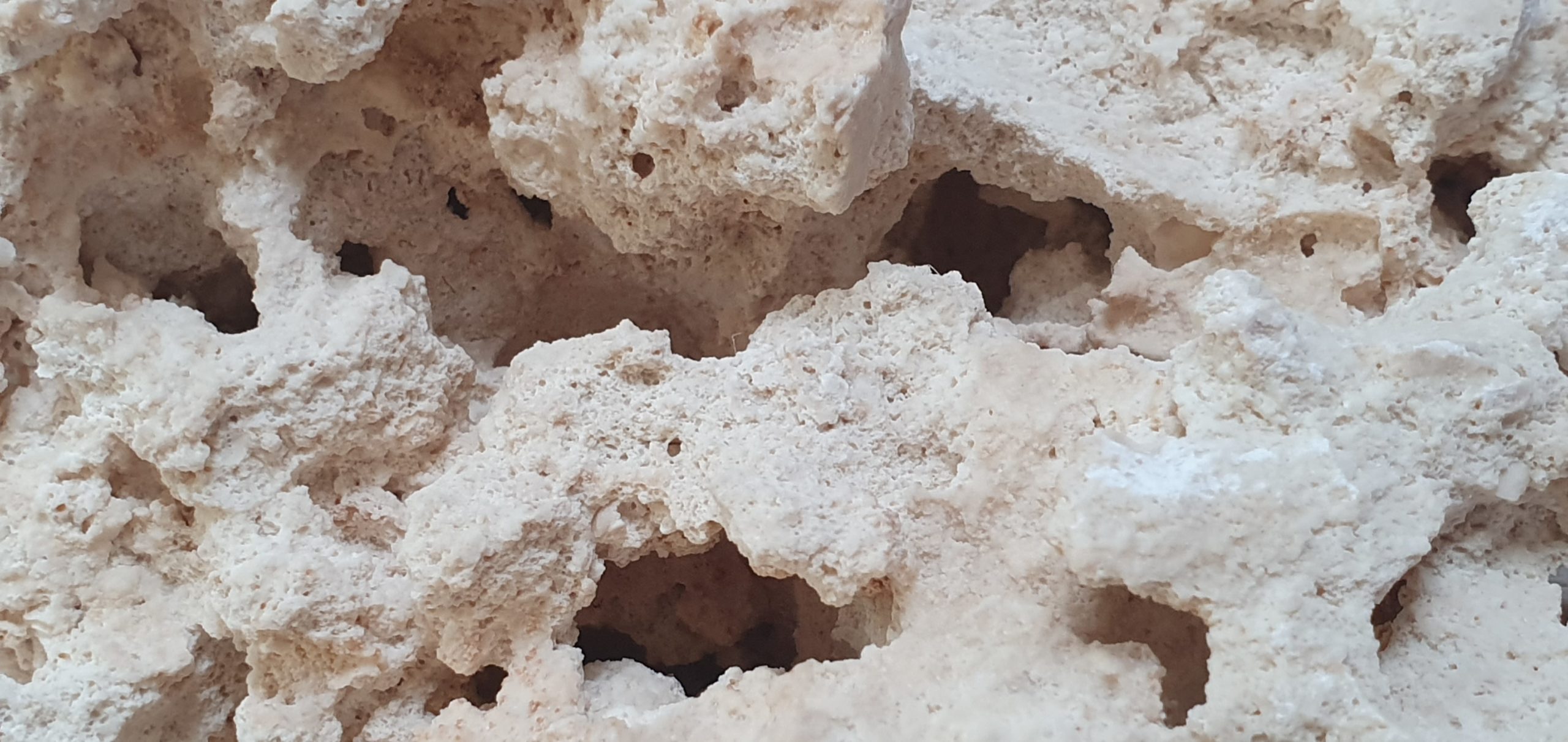Dry rock in a marine aquarium
Dry rock is nothing but a dried rock – usually of natural origin. Such a rock retains its natural porosity, but has no life on it or in it. So it’s a kind of combination of living and artificial rock. Dry rock is suitable for reanimating the aquarium, so that after a sufficiently long period of time it may get all the advantages of good quality living rock.
Threats
This solution might seem perfect. However, there is one trap that can cause a lot of stress for the aquarium keeper. The point is, it’s not enough to just dry out the rock. You need to remember that a living rock has a lot of life in its pores. Drying it means killing all organisms living on and inside the rock. If you put a badly cleaned rock into the aquarium too quickly, all the organic matter that has not been decomposed so far will start to rot in the aquarium. The effect will be similar to inserting freight rocks into an aquarium – long and stormy maturation.
Cleaning dry rock
Good dry rock should be thoroughly cleaned with a pressure washer and a brush before it is used again. Very often a chlorine (bleach) or sodium hydroxide are used, which oxidize and decompose dead organic matter. Of course, such rock should be intensively cleaned with clean water for a long time before final drying in order to remove any remaining dead organic matter. However, it is enough to imagine the microscopic pores in the rock to understand that the complete removal of organics is an extremely difficult and tedious process.
Commercially produced dry rock may have a lower phosphate content due to bathing in lanthanum chloride, which binds phosphates. However, home-made dry rock production has dubious effects. Apart from chlorination, “inventive” aquarists freeze the rock, bake it in the oven, pour RO water. In any case, they get rock full of dead organic matter, which, if not removed properly, will cause an invasion of plagues in the aquarium.

Problem with assessing dry rock quality
The biggest problem with dry rock is that it is actually difficult to assess its quality before buying it. It can be perfectly prepared and perfectly fulfill its task in the aquarium, but it can also give the aquarium hobbyist gray hair when it is still rotting in the aquarium even after six months.
Dry rock is suitable as an addition to live rock in a relatively stable aquarium, e.g. when making new constructions. Even if the rock releases nitrates and phosphates, the mature system should be able to consume additional nutrients on an ongoing basis. Furthermore, herbivorous fish (e.g., unicornfishes) living in the aquarium should easily deal with possible algae.










